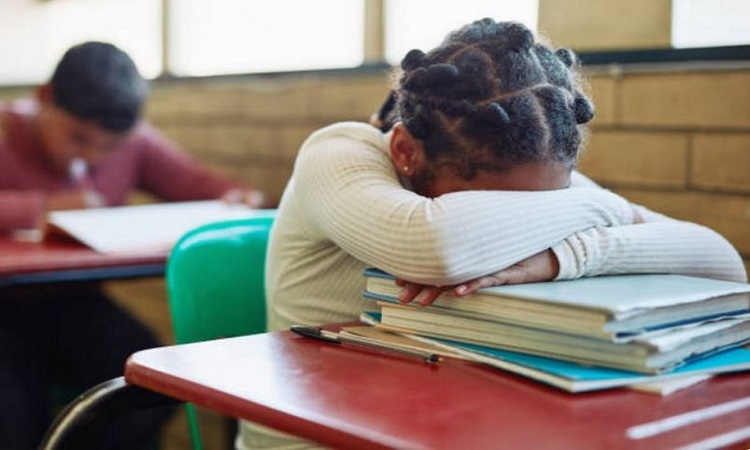 English
English

Describe shyness. According to research, shyness is characterised by dread and anxiety in the face of social novelty and/or social judgement. Read further on Dynamite News.

Washington: Describe shyness. According to research, shyness is characterised by dread and anxiety in the face of social novelty and/or social judgement. Although behavioural, affective, and physiological manifestations of shyness might occur, little is known about how these elements interact.
According to long-standing beliefs, temperamental shyness is a term that can be used to conceptualise shyness as a feature that is largely consistent throughout development. Shyness can also be thought of as a feeling experienced in a particular social setting; this concept is known as state shyness. Researchers at McMaster University in Canada recently published a study in Child Development that looked at a child's behavioural, affective, and physiological reactions to a speech task in order to better understand shyness in kids.
The results revealed that while a wider percentage of children may occasionally experience shyness as an emotional state, temperamental shyness may exist in a different group of children over time.
"Our findings provide empirical support for the long-theorized idea that there may be a subset of temperamentally shy children who manifest heightened behavioral, affective, and physiological reactivity in response to a social stressor, as well as a subset of children who may experience only the affective component which may reflect state shyness," as explained by Kristie Poole who conducted the study at McMaster University and is now a Banting Postdoctoral Fellow at Brock University. "This highlights the multiple components and developmental course of temperamental shyness and the features that distinguish temperamental and state shyness in middle to late childhood."
The current study included 152 Canadian children (73 girls) aged 7-8 years and their primary caregivers. The children were born in a local hospital and were recruited from a child database at McMaster University containing birth records of infants whose parents consented to their infant's inclusion. Ninety per cent of participating caregivers were mothers and 10 percent were fathers. Children were primarily White (81.6 per cent), followed by mixed race (9.9 per cent, Asian per cent, Black (2.6 per cent), and Latin American (2 percent). Children were primarily from middle to upper-socioeconomic-class families.
Children were fitted with an ambulatory electrocardiogram and completed activities with an experimenter in a room adjacent to their parents. During this time, parents completed online questionnaires related to the child's temperament while monitoring their child on a muted closed-circuit monitor. Children prepared a two-minute speech about their last birthday and recited their speech in front of a video camera and mirror. They were told the speech would be videotaped for other children to watch later. This was designed to induce stress. The study team coded children's avoidance/inhibition (i.e., behavior), children self-reported their nervousness (i.e., affect), and respiratory sinus arrhythmia (i.e. physiology) was measured.
For their time, families were given $20 gift cards and children received a Junior Scientist Certificate. At one- and two-years post evaluations, parents completed an online follow-up survey on their child's temperament. They responded to statements such as "child acts shy around new people." This examined how a children's responses to the speech were related to their temperament across time. Parents were given a $10 gift card at each follow-up.
"The findings showed that approximately 10 percent of children in our study showed social stress reactivity to the speech on behavioral, affective, and physiological levels, and also had a pattern of relatively higher, stable parent-reported temperamental shyness across time, providing evidence that they may be characterized as temperamentally shy," Poole continued. "A second subset of approximately 25 percent of children showed a pattern of social stress reactivity only on an affective level (i.e., self-reported feeling nervous), and did not show relatively high levels of parent-reported temperamental shyness, providing evidence that they may be characterized by state shyness. The findings have implications for the conceptualization of shyness in that different types of shyness may differ in kind rather than degree."
The findings provide empirical evidence for long-standing ideas first articulated by the late Jerome Kagan several decades ago. He argued that temperamental shyness may exist as a distinct category for some children and the features that define this category are relatively stable across time and context. In addition to this subset of temperamentally shy children, researchers found that a larger subset of children may experience shyness as an emotional state in some situations. It is likely that the experience of state shyness in response to a speech task is a relatively common, normative experience for children at this age.
For a smaller group of temperamentally shy children, however, being the center of attention may be stressful across time and various contexts. Since we know that not all children are alike and early temperamental shyness is a risk factor for internalizing-related problems, future work should examine the consequences of these findings for children's social, psychological, and academic adjustment.
The authors acknowledge several limitations in their research. The study only measured behavioral, affective, and physiological components at one point in time, so they do not have the means to measure whether these components remain stable across development. The authors recommend that future research include more diverse samples of children as this study was primarily of White children from middle to upper socioeconomic status families making it difficult to generalize the findings. (ANI)